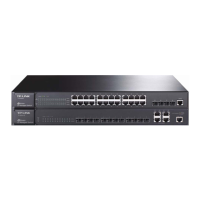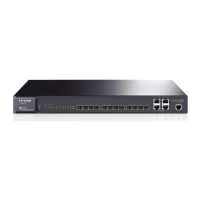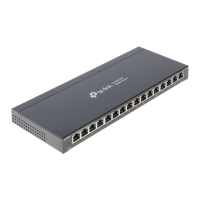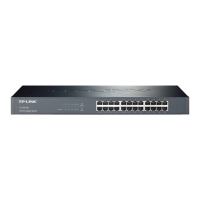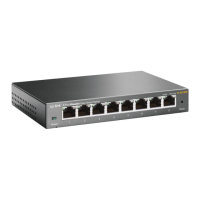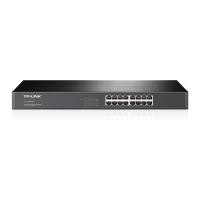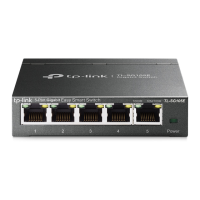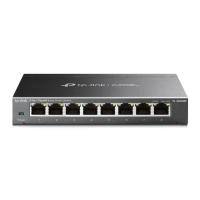Configuring the Switch
3-114
3
Configuring Interface Settings
You can configure RSTP and MSTP attributes for specific interfaces, including port
priority, path cost, link type, and edge port. You may use a different priority or path
cost for ports of the same media type to indicate the preferred path, link type to
indicate a point-to-point connection or shared-media connection, and edge port to
indicate if the attached device can support fast forwarding. (References to “ports” in
this section means “interfaces,” which includes both ports and trunks.)
Command Attributes
The following attributes are read-only and cannot be changed:
• STA State – Displays current state of this port within the Spanning Tree.
(See Displaying Interface Settings on 3-111 for additional information.)
- Discarding - Port receives STA configuration messages, but does not forward
packets.
- Learning - Port has transmitted configuration messages for an interval set by
the Forward Delay parameter without receiving contradictory information. Port
address table is cleared, and the port begins learning addresses.
- Forwarding - Port forwards packets, and continues learning addresses.
• Trunk – Indicates if a port is a member of a trunk. (STA Port Configuration only)
The following interface attributes can be configured:
• Spanning Tree – Enables/disables STA on this interface. (Default: Enabled).
• Priority – Defines the priority used for this port in the Spanning Tree Protocol. If
the path cost for all ports on a switch are the same, the port with the highest priority
(i.e., lowest value) will be configured as an active link in the Spanning Tree. This
makes a port with higher priority less likely to be blocked if the Spanning Tree
Protocol is detecting network loops. Where more than one port is assigned the
highest priority, the port with lowest numeric identifier will be enabled.
• Default: 128
• Range: 0-240, in steps of 16
• Path Cost – This parameter is used by the STP to determine the best path
between devices. Therefore, lower values should be assigned to ports attached to
faster media, and higher values assigned to ports with slower media. (Path cost
takes precedence over port priority.) Note that when the Path Cost Method is set
to short, the maximum path cost is 65,535.
• Range –
- Ethernet: 200,000-20,000,000
- Fast Ethernet: 20,000-2,000,000
- Gigabit Ethernet: 2,000-200,000
• Default –
- Ethernet – Half duplex: 2,000,000; full duplex: 1,000,000; trunk: 500,000
- Fast Ethernet – Half duplex: 200,000; full duplex: 100,000; trunk: 50,000
- Gigabit Ethernet – Full duplex: 10,000; trunk: 5,000

